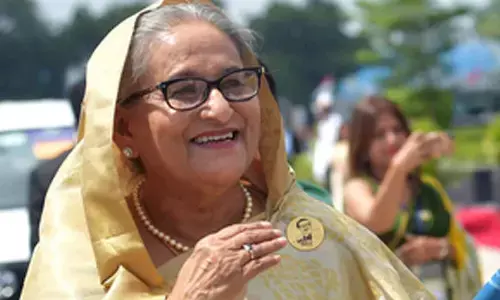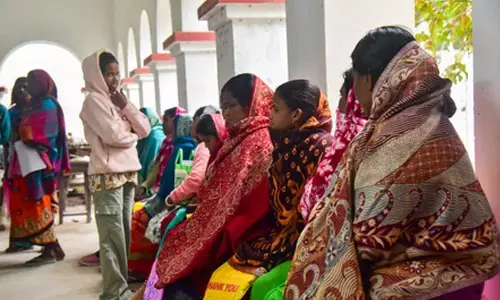Unhealthy diets, physical inactivity driving abdominal obesity in India: Soumya Swaminathan
Share :

Unhealthy diets and physical inactivity are the main reasons for rising abdominal obesity in India, said Soumya Swaminathan, former WHO Chief Scientist.
New Delhi: Unhealthy diets and physical inactivity are the main reasons for rising abdominal obesity in India, said Soumya Swaminathan, former WHO Chief Scientist.
Swaminathan, who is currently the Principal Advisor for the Health Ministry’s tuberculosis programme called for expanding access to healthier diets and spaces for exercise in the country to fight against obesity, which is already a global health concern.
Obesity is a known precursor to diabetes, hypertension, and cancer -- the non-communicable diseases rising significantly both in India and worldwide.
“Abdominal obesity - unhealthy diets and physical inactivity are driving this unhealthy trend,” Swaminathan said in a post on X.
“More awareness, nutrition literacy, expanded access to healthier diets, spaces for exercise needed,” she added, citing a recent study on abdominal obesity, published in the journal The Lancet Regional Health.
The study led by researchers from IIHMR University in Jaipur and Johns Hopkins University’s Bloomberg School of Public Health in the US, is based on data from the National Family Health Survey (NFHS-5) conducted in 2019-21.
The results showed that abdominal obesity is more prevalent among women (40 per cent) than men (12 per cent).
About 5-6 out of 10 women between the ages of 30 and 49 are abdominally obese.
The association of abdominal obesity in women is stronger in elderly women and non-vegetarians. While abdominal obesity is more prevalent among people living in urban areas, the study showed that it is also on the rise in rural areas and is penetrating lower and middle socioeconomic sections of society.
In India, BMI has conventionally been used to measure obesity. For the first time, the NFHS-5 assessed abdominal obesity through the waist circumference of 6,59,156 women and 85,976 men (aged between 15 and 49 years).
The study thus found that some women with healthy BMI also have abdominal obesity.
Kerala (65.4 per cent), Tamil Nadu (57.9 per cent), Punjab (62.5 per cent), and Delhi (59 per cent) showed a high prevalence of abdominal obesity, while Jharkhand (23.9 per cent) and Madhya Pradesh (24.9 per cent) had lower prevalence.
Besides indicating an “emerging health risk for Indian women”, the study also showed “a double burden of malnutrition” in the country.
The researchers urged the government to take proactive steps “to design targeted interventions for the groups who have high abdominal obesity, particularly for the women in their thirties and forties”.









